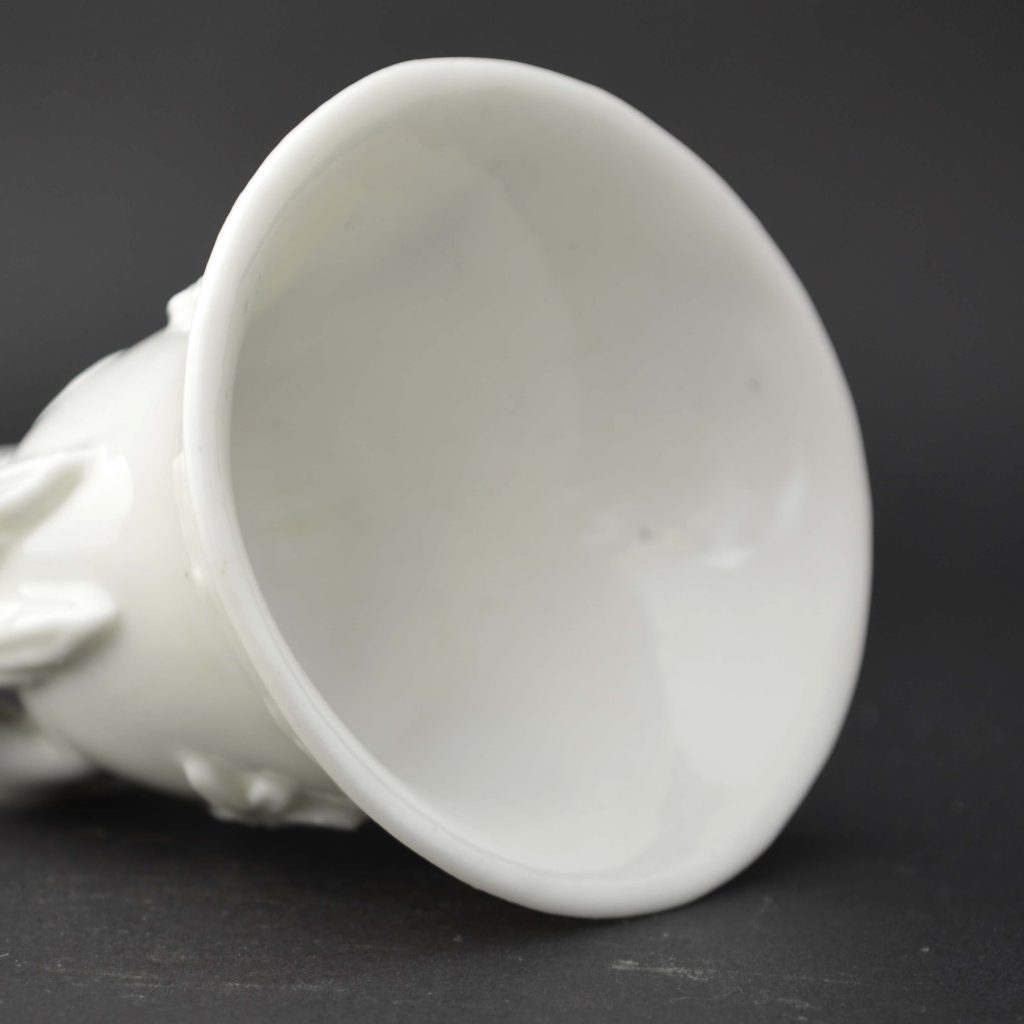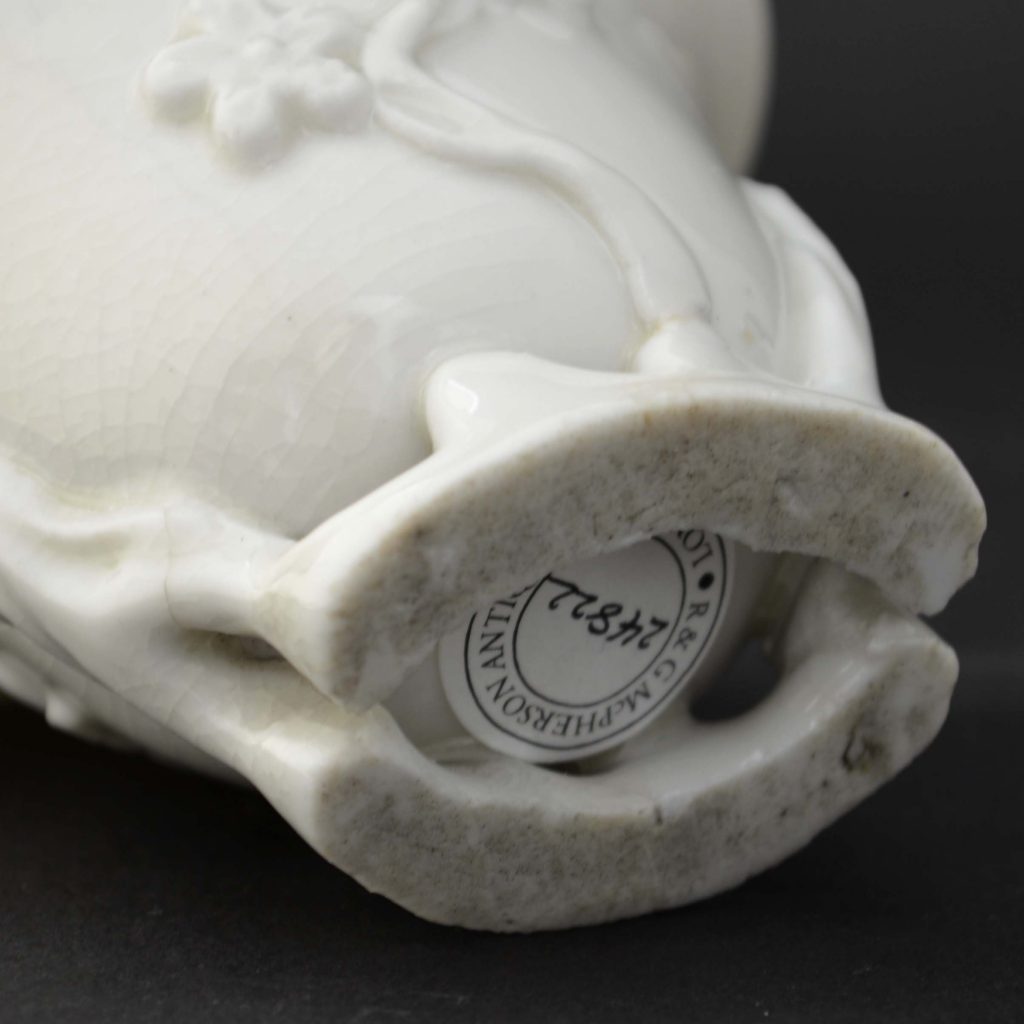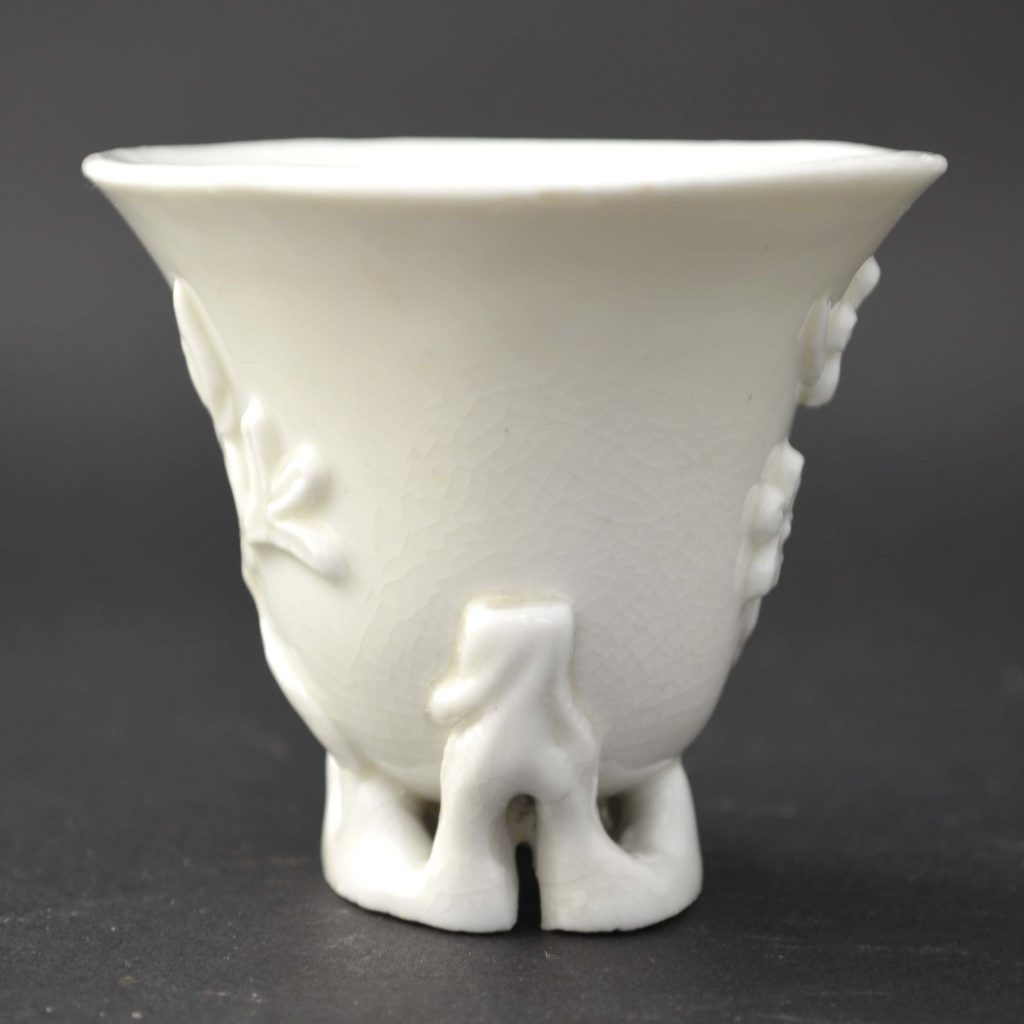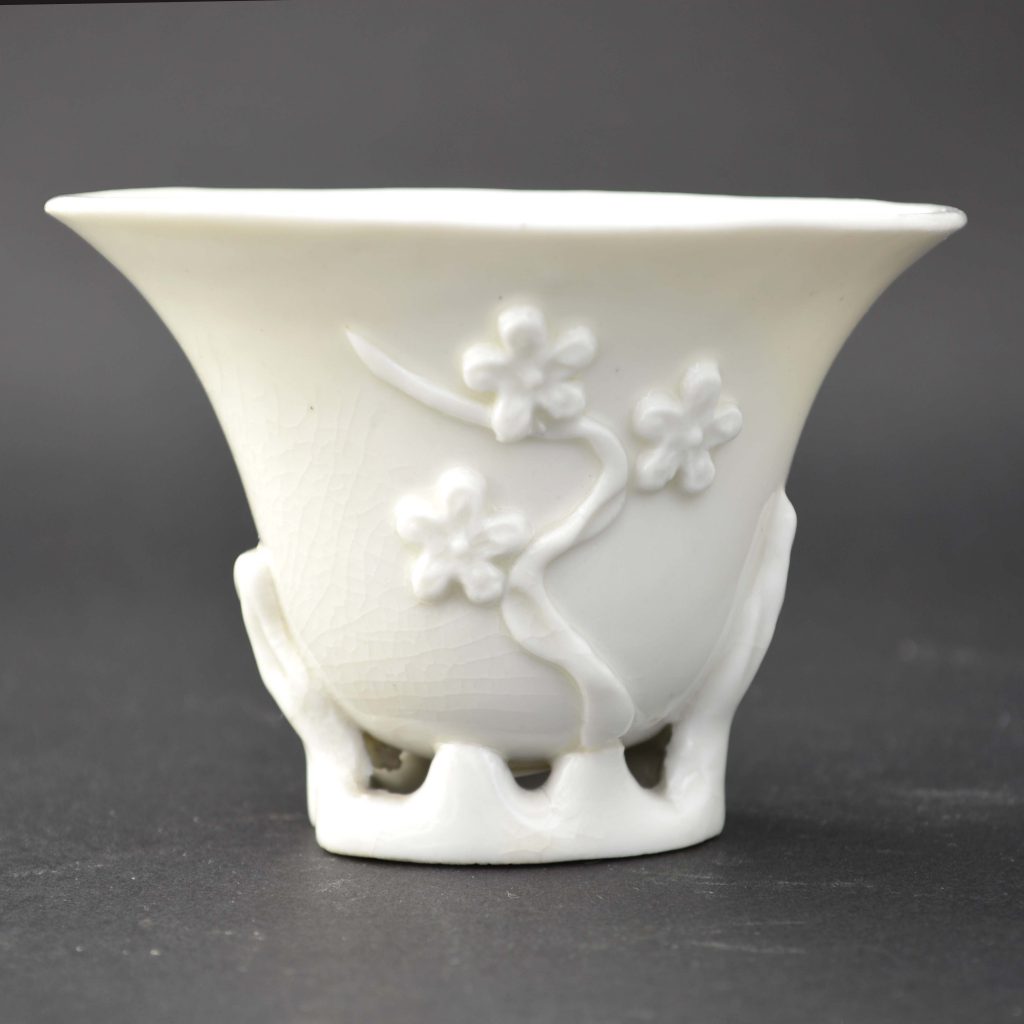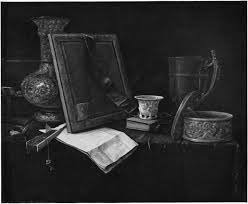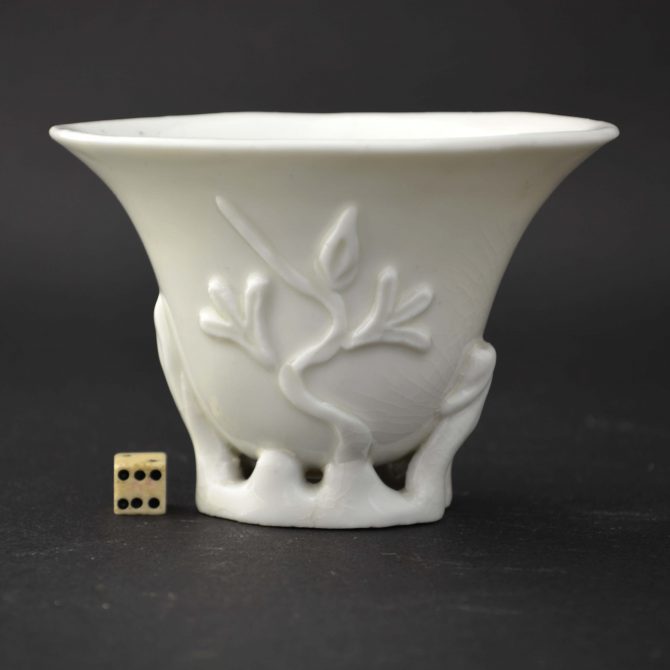
A Chongzhen, Shunzhi or Kangxi Blanc de Chinese Porcelain Wine Cup or ‘Libation Cup’.
A large late Ming or early Qing Blanc de Chine Porcelain wine cup, Chongzhen, Shunzhi or Early Kangxi period c.1640 – 1680. Decorated on one side with magnolia and on the other prunus.
- Condition
- In excellent condition with no damage, some very fine clean crazing.
- Size
- Length : 9.5 cm (3 3/4 inches).
- Provenance
- N/A
- Stock number
- 24822
- References
- For a very similar blanc de chine porcelain cup see : Blanc de Chine (P.J. Donnelly, Faber and Faber, 1969) Illustration 27 and a painting by Leonard Knyff of 1681 showing a similar wine cup with European works of art (27a). For another blanc de chine porcelain cup of this type see : Blanc de Chine, Porcelain From Dehua, A Catalogue of the Hickley Collection, Singapore (Rose Kerr & John Ayers, Art Media Resources Ltd, 2002) Item 122. For further 17th century Blanc de Chine porcelain cups of this type see our `Sold Items` numbers 17866, 21986 and 22531.
Information
Blanc de Chine Libation Cups :
Blanc de Chine cups of of oval tapering form with integral supports have been traditionally referred to as `Libation Cups`. This is unlikely to be correct, their shape follows that of rhinoceros horn cups which was made locally, it is interesting baring in mind the important powers that the Chinese attach to this material. By having a Blanc de Chine cup of this form some of the powers of real rhinoceros horn might be conveyed to the drinker. The appliqués were many and varied, there arrangement alters from cup to cup giving an infinite variety.
Plum Blossom (Prunus) / Meihua :
Plum Meihua is one of the most important plants in Chinese art. Their flowers grow on knurled old angular branches, the flowers are fragile and pure, so they can be a symbol of vigour in old age as well as purity. The tree is the first to flower after the long hard winter, symbolically it can represent perseverance as well as renewal. This meaning is enhanced by a background of cracked-ice, the design can be seen as representing the end of winter and the beginning of spring with the ice of winter cracking to reveal a new year dawning. Branches of plum blossom convey the `Five Blessings` Meikai wufu, longevity, wealth, health, love of virtue and a peaceful death. The number five, an auspicious number to the Chinese, is taken from the five petals of the plum flower.
Leonard Knyff of 1681 showing a similar wine cup with European works of art.
National Gallery London.
